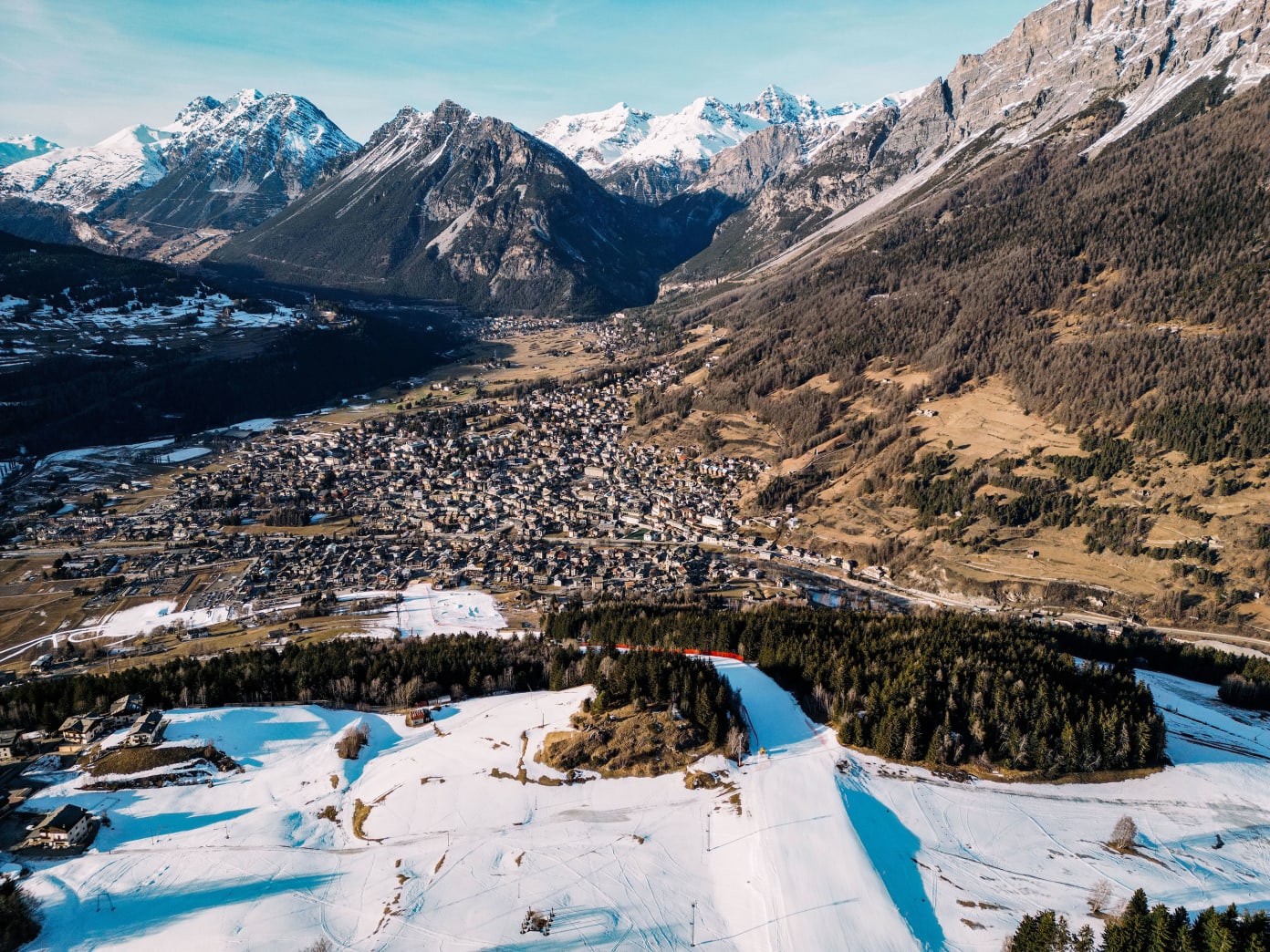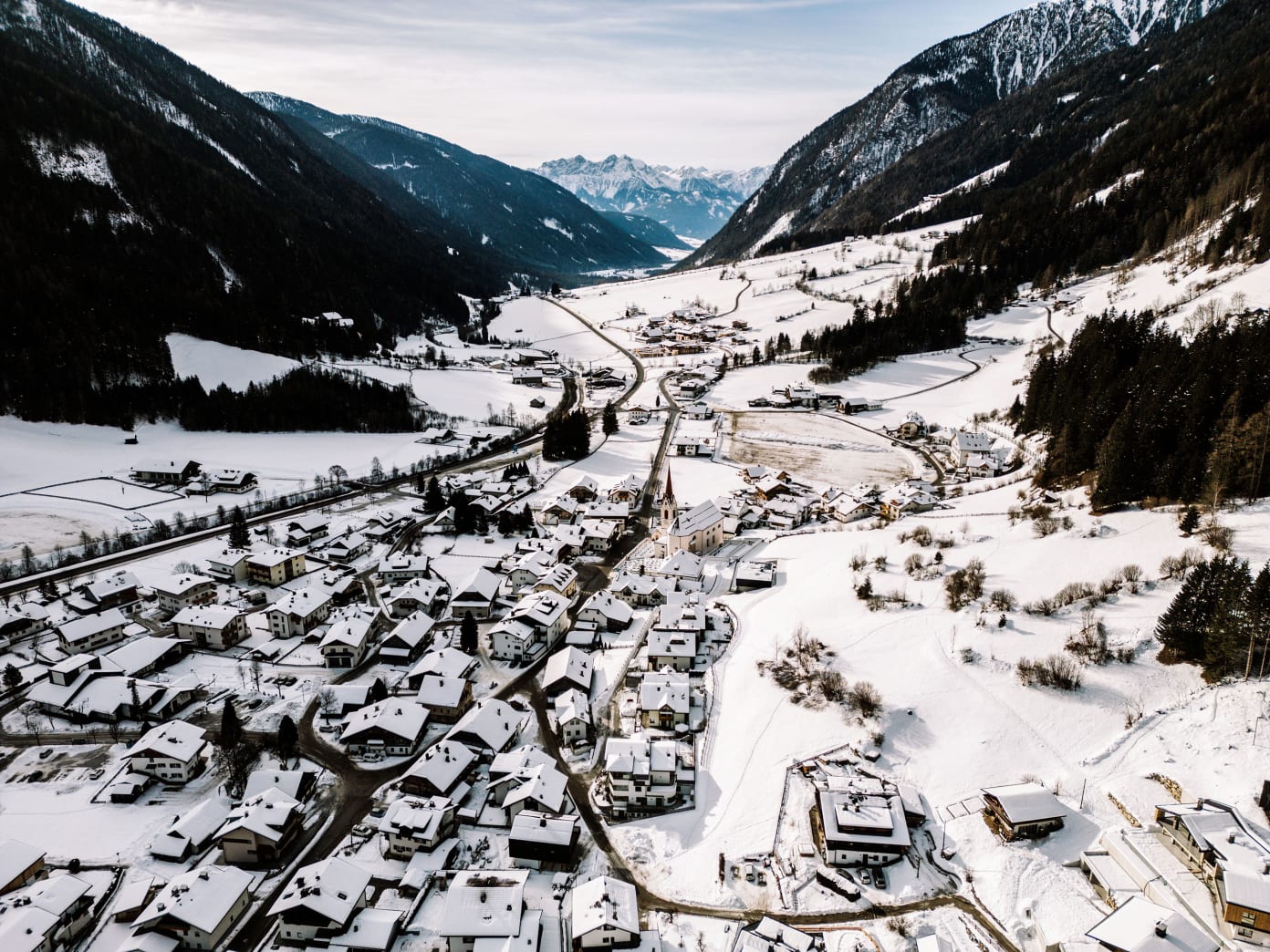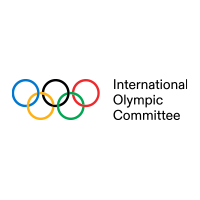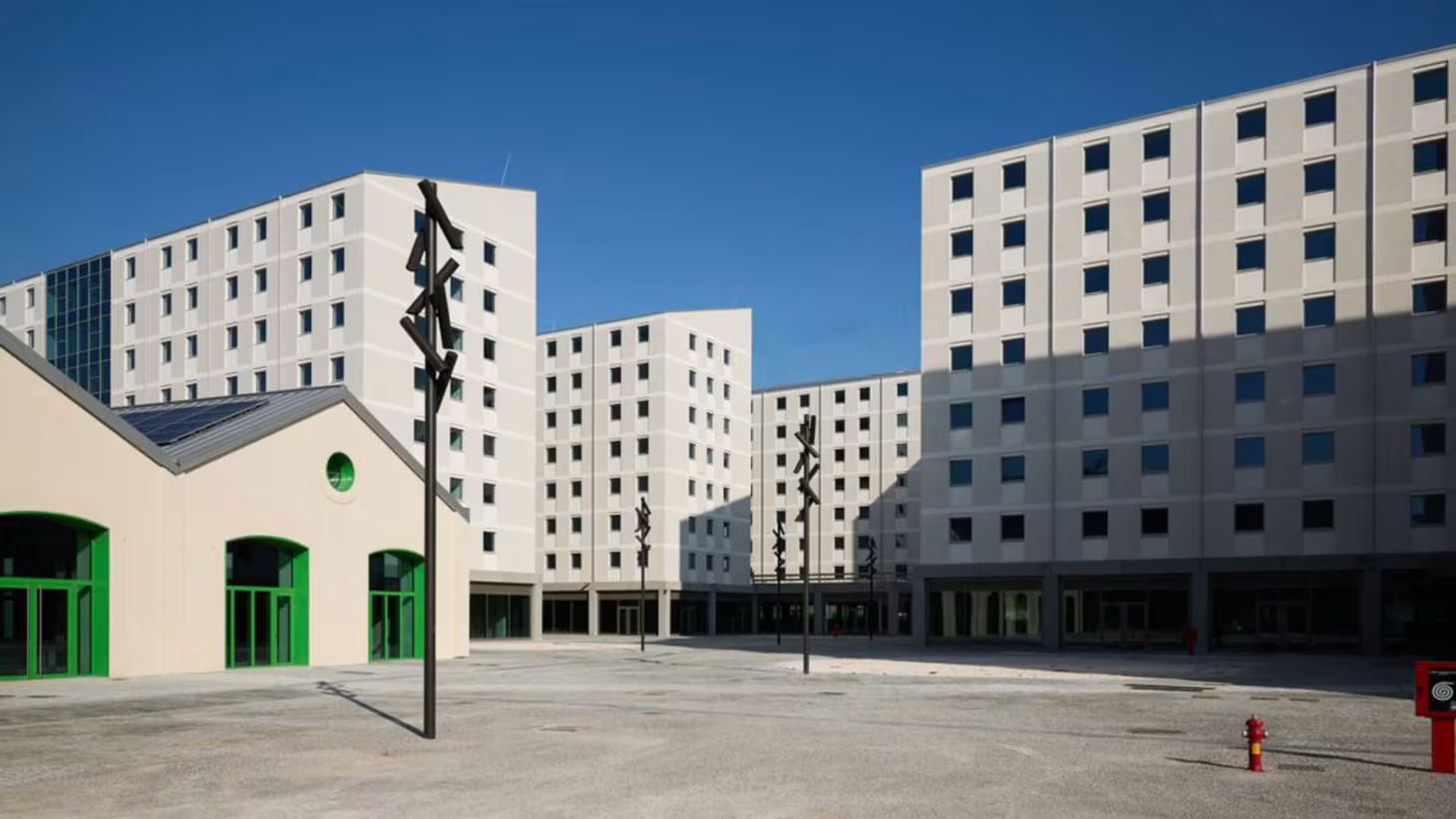18 November 2025 - The Games’ organisers are making the best use of the world-class venues already woven into the landscape, across Northern Italy’s cities, valleys and Alpine towns. The Milano Cortina 2026 Olympic Villages follow the same mode, redefining the concept of Olympic living: from Milan’s city centre through to Cortina’s Dolomite valleys and Livigno’s high-altitude borderlands, the decentralised Games won’t have a single campus. Instead, six Olympic Villages will seamlessly adapt to their surroundings: some developed through new constructions, renovations or temporary structures; others hosted within existing hotels, transforming them into fully integrated Village environments. Together, the Villages form a network rooted in the character and unique needs of each host community.
KEY FACTS:
Milano Cortina 2026 will have six Olympic Villages across Northern Italy – in Milan, Livigno, Bormio, Predazzo, Anterselva and Cortina – combining new, temporary and existing facilities tailored to local contexts.
Each location is designed to make the most of existing or temporary structures, minimising new construction and adapting to local needs, while ensuring all athletes can enjoy the full Olympic experience.
The newly built Milano Olympic Village, located in the Porta Romana district, will become a permanent student neighbourhood, while other sites will return to tourism or open space, reflecting a focus on reuse and lasting local value.
The geography of Northern Italy makes this approach both logical and necessary. Venues are spread between Milan, Cortina d’Ampezzo and the Alpine valleys of Lombardy, Trentino and South Tyrol, linked by a carefully planned network. With Olympic Villages in Milan, Cortina, Livigno, Bormio, Predazzo and Anterselva, no athlete is too far from their competition site.
At the same time, efforts have been made to ensure all athletes can enjoy the full Olympic experience. Milan Cortina 2026 will be the first edition of the Winter Games with a multi-centred model. The Opening Ceremony will also reflect the Games’ multi-centred model: thanks to an innovative and inclusive project, all athletes will be able to participate in a shared experience between Milan, Cortina, Valtellina and Val di Fiemme. As a result of this approach, more athletes than ever before will have the possibility to take part in the Opening Ceremony and be part of the parade of their delegation.
Olympic Villages have always reflected their time – from wooden huts in 1924 to lasting community neighbourhoods today. Each edition tells a story about the context and ambitions of its hosts. Milano Cortina 2026 continues this evolution, showing that housing athletes is about more than logistics – it’s about creating lasting value for local people.

Marie Sallois, IOC Director for Sustainability
MILAN - PORTA ROMANA'S URBAN REINVENTION
In the southeast of the city, the abandoned Porta Romana railway yard is being reborn as the Milan Olympic and Paralympic Village. Once a tangle of sidings and warehouses, the site is now home to six new residential blocks with pale façades and clean, geometric lines, set around tree-lined courtyards, alongside two restored brick depots that preserve the site’s industrial character.
During the Games, it will accommodate about 1,500 residents. After the Games, it will be converted into a vibrant neighbourhood offering 1,700 student beds, including subsidised accommodation, interwoven with cafés, shops and green spaces.
The project is part of Milan’s long-term regeneration plan, stitching an industrial scar into the urban fabric. Sustainability is embedded throughout: the Village is targeting LEED Gold certification through rooftop solar panels, rainwater reuse systems, heat pumps and low-carbon materials. The Village Plaza, a wide, pedestrian square framed by the new buildings, will become a public space for markets and community life after the Games.

CORTNA - A TEMPORARY SOLUTION IN THE DOLOMITES
Cortina d’Ampezzo, the “Queen of the Dolomites” and host of the 1956 Games, will once again welcome the world. Its 2026 Olympic Village, located in Fiames just north of the town, is purposefully temporary: a modular complex built from mobile, prefabricated units. About 377 of these compact wooden-clad homes, each about the size of a small apartment and equipped with modern climate control and ergonomic furnishings, will be arranged in orderly rows, connected by walkways and plazas. The result is a pop-up Alpine town for 1,400 residents, set against the dramatic backdrop of the Pomagagnon and Tofane peaks.
During the Olympic and Paralympic Games, the Village will function as a compact community with dining halls and shared recreation spaces. Then, it will be dismantled, returning the land to open space.

LIVIGNO - ADAPTED ALPINE LODGES
High in the Alps near the Swiss border, Livigno is renowned worldwide as a hub for freestyle and snowboard sports. Instead of building a new facility, three traditional Alpine lodges with timber balconies and pitched roofs will be adapted to host athletes just steps from the slopes. After the Games, these lodges will return to Livigno’s vibrant hospitality sector, avoiding new construction while strengthening the town’s established tourism economy.

BORMIO - HISTORIC SKI RESORT WELCOMES OLYMPIANS
Further west, Bormio will welcome athletes in existing hotels, located close to the Alpine skiing venues. This approach allows the resort to make the most of its existing infrastructure while ensuring athletes stay close to their competition sites.

ANTERSELVA - HOTELS ACCOMMODATE ATHLETES
In Anterselva, world-renowned for biathlon, athletes will be accommodated in existing hotels. After the Games, they will return to regular tourism, embodying the same principle of adaptation and reuse that defines Milano Cortina 2026.

PREDAZZO - EXISTING FACILITIES UPGRADED FOR THE GAMES
In Predazzo, within the Val di Fiemme cluster, an existing facility is being renovated to accommodate athletes and officials, including those competing in Tesero. It combines modernisation with respect for the town’s character and heritage.

